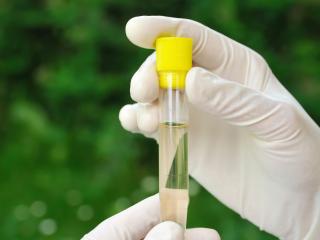Characteristics of salt-tolerant plants
Plants that have adapted to highly saline conditions are known as halophytes and occur naturally in mangrove swamps, coastal areas that are affected by salt spray and degraded land affected by rising salt levels. Such plants have modified internal structures that divert salts away from necessary functions.
- Succulents have fleshy foliage high in water concentrations that are able to dilute salts to an acceptable level.
- Salt-tolerant grasses have adapted to prevent salts from entering the roots.
- Other plants have evolved glands that divert excess salt to specialised cells on the leaf surface.
Managing garden salinity
As a home gardener you can manage your soil, fertiliser, water and choice of plant to minimise salt damage.
Improve soil structure
- On heavier clay soils, mix in gypsum at a rate of up to 5kg per square metre to improve infiltration of water and leaching of salt. Gypsum improves the soil texture, making it finer so that water can infiltrate more easily. Later, the gypsum releases vital nutrients such as calcium and sulfate into the soil which plants can then use.
- Build up soils with organic matter and apply soil wetting agents every year.
Fertilisers
Some garden fertilisers contain chloride, which may add to the salinity problem. Check the fertiliser composition on the label before purchase. Avoid fertiliser that has KCl (muriate of potash) as the potassium source.
Water
- Avoid wetting leaves during the day with salty water because when the water evaporates salt deposits left on the foliage cause burning.
- Set up drip irrigation which maintains a moist area around the roots forcing the salts to the edge of the wetted zone.
- ‘Shandy’ bore water with scheme water, either by mixing it in a tank or by watering with bore and scheme water in rotation.
- Isolate salt-sensitive plants from salty bore reticulation and use an alternative water supply.
- If you recycle grey water on the garden use liquid washing detergents which contain fewer salts than washing powders.
Plants
Replace ornamental plants with more tolerant varieties. The Department of Agriculture and Food web article on water quality has a list of suitable fruit, vegetables, shrubs and trees.
Lawns varieties like saltene (Paspalum vaginatum), ryegrass (Lolium sp.), fescue (Festuca sp.), Queensland blue couch (Digitaria distichum) and common couch grass (Cynodon dactylon) are suitable for moderately saline conditions.
Measuring salinity
Electrical conductivity (EC) is a measurement of dissolved salts in water. These salts conduct electricity. EC is measured as milli Siemens per meter (mS/m). Home gardeners can purchase ‘stick’ meters from agricultural suppliers. Although they are not as accurate as commercial units, they will satisfy home garden requirements. An EC reading will not indicate what types of salts are contributing to your problem.
Water samples
Take a sample of your water in a 500mL clear glass or plastic bottle having rinsed it thoroughly with the water to be tested to prevent contamination. To get a true indication of the water to be tested your bore must be run for at least 10 minutes before taking the sample. Samples should not be taken in extreme temperatures as this affects the EC reading.
Home gardeners should have their bore water tested before applying it to the garden.
A number of analytical laboratories will analyse water, including the Chemistry Centre WA, or consult the internet or Yellow Pages directory for other testing centres under ‘Analysis’. Fees are charged for water testing.
Gardeners should take into account the fact that bore water quality changes with the seasons.
Soil and potting media samples
Soil tests can only be as accurate as the samples on which they are based. As soils vary in their distribution of plant nutrients, take at least six 100g samples from the area to be tested and mix them thoroughly into one 500g sample. The composite sample then becomes an ‘average’ of the soil. Take separate samples from areas that show different symptoms or changes in soil type. Soil samples are measured as 1 part soil to 5 parts distilled water and are analysed with a conductivity meter.
AGWEST Plant Laboratories test soil and plant tissue samples.
Unfamiliar pests
The Department of Agriculture and Food, Western Australia (DAFWA) is on the lookout for animal and plant pests, diseases and weeds that could pose a threat to agriculture and the environment.
If you discover something unfamiliar, please send a photo to the Pest and Disease Information Service (PaDIS) by email: info@agric.wa.gov.au or phone them on Freecall: 1800 084 881.
Please read the sending samples for identification web article before sending, or bringing in, samples to the Pest and Disease Information Service, 3 Baron-Hay Court, South Perth, 6151, WA.

